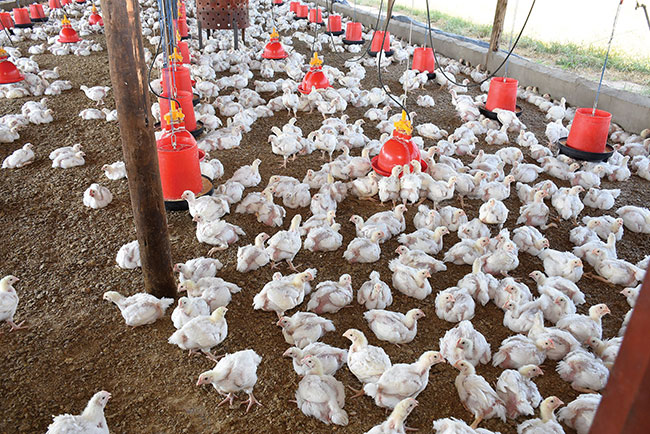
Features
Storage solutions
Tips for storing poultry litter amidst coronavirus restrictions.
June 12, 2020 by Chris McCullough

In some areas of the U.K., poultry farmers are facing problems disposing of their manure during the coronavirus pandemic. Broiler farmers, in particular, may face restrictions and cannot dispose of the manure in the normal manner, leading to environmental concerns and uncertainty about next steps.
Northern Ireland’s College of Agriculture Food and Rural Enterprise (CAFRE) has offered help to producers in Ireland and the United Kingdom with some action to be taken. Producers in North America should check with their local state or provincial guidelines for proper poultry storage and handling tips if restrictions are in place due to COVID-19.
Sinead Mathers is one of the pigs and poultry agri-environment advisers at CAFRE and has issued guidelines for how to store broiler litter if houses have been cleared out and litter disposal cannot take place as normal due to coronavirus restrictions.
“Litter can temporarily be stored in the farmyard. Prior to land application or before being moved to another premises, poultry litter should be stored in a midden or enclosure which has adequate effluent collection facilities and covered with an impermeable membrane,” Mathers says.
“Litter can also be stored in a field, but farmers must notify the environmental authorities of any poultry litter placed in a field heap,” she advises, noting producers should consult with the Northern Ireland Environment Agency in Northern Ireland, or their local state or provincial environmental agency.
“It must be covered with an impermeable membrane within 24 hours of placement in the field. If stored in a field, the poultry litter must not be stored for longer than 120 days or in the same location in consecutive years, in quantities greater than would be applied to that field.
“Poultry litter must be stored in a compact heap. This must not be within 40 meters [131 feet] of any waterway; 100 meters [328 feet] of lakes; 50 meters [164 feet] of a borehole, spring or well; 250 meters [820 feet] of a borehole used for a public water supply or 50 meters [164 feet] of exposed cavernous or karstified limestone feature,” she says.
Mathers says farmers are keen to spread the litter directly onto fields but she advises against this. “Poultry litter should not be spread on agricultural land that is to be grazed, or from which silage or hay is to be harvested, in the same year, due to the risk from botulism,” she says. “If litter must be spread, it should be deep-ploughed into arable ground in line with crop requirements. If this is not an option and litter must be utilised by spreading on pasture, the litter must be checked for carcasses and ruminants should not have access to the treated fields for at least several months.”
However, she adds, there is no guarantee that the treated fields would then be safe for ruminants. “Spreading litter on a windy day may also pose a risk of contaminating adjacent fields,” Mathers cautions.
Poultry litter management practices
- Poultry litter should be composted before it is spread in fields or around standing crops or trees. Fresh litter should not be applied if the field or pasture will be grazed by livestock.
- Poultry litter that has been properly composted for a period of 30 days (specific environmental conditions may affect this timeline) can be spread on pastures, as the heat generated during composting kills harmful bacteria, parasites and weed seeds.
- Poultry litter should be spread on fields two to four weeks before planting. After the litter is spread, it should be tilled into the soil about six to eight inches to avoid nitrogen loss, leaching, or run-off.
- When working with standing crops, consider side-dressing during late spring or early summer. The compost should be spread about an inch from the plant’s stem.
- If litter is kept in temporary storage or stockpiled, it should be located on a concrete or impermeable base to prevent leaching into soil or groundwater, kept far from and preferably downslope of wells or other sources of drinking water;
- Keep the litter dry. Wet litter can cause nitrogen to be released in the form of ammonia.
- Stockpiles should be covered with plastic sheeting weighed down with cinder blocks or other heavy objects.
- Always check with local municipal or state/provincial regulations and ordinances regarding use and storage of poultry litter prior to application.